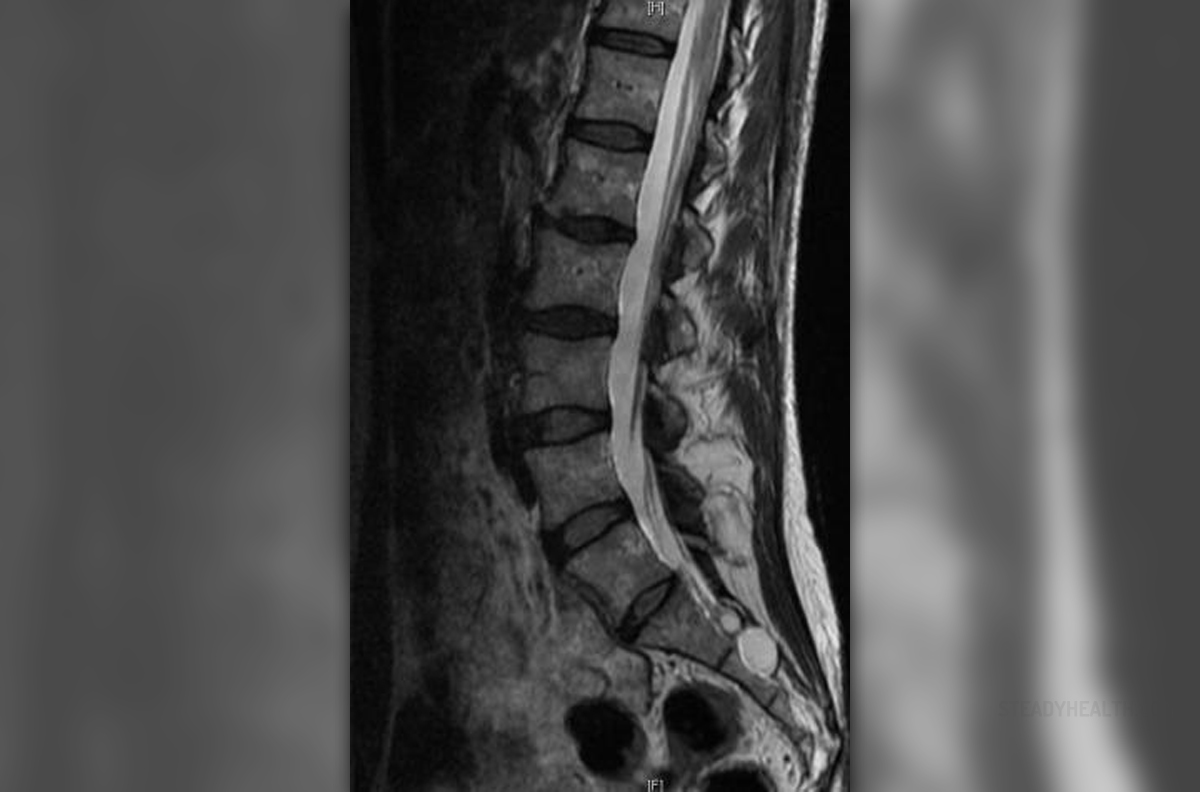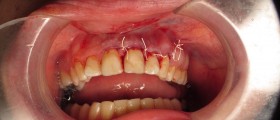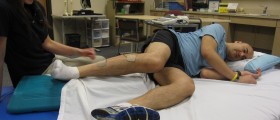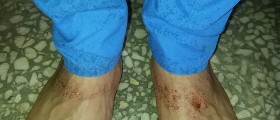
Tarlov cysts, also known as the perineural cysts, are fluid-filled sacs that most often affect nerve roots at the lower end of the spine (sacrum), in spinal canal of S1 to S4 region of vertebrae. These cysts most commonly occur at the S2 or S3 junction of the dorsal nerve root ganglion. Such cysts, filled with cerebrospinal fluid, typically cause no symptoms and are found incidentally on magnetic resonance imaging (MRI) studies done for other reasons. The cysts are thin and fibrous in appearance, and normally prone to rupture if touched. This characteristic makes them extremely difficult for surgery. Tarlov cysts can be distinguished from other meningeal cysts by nerve-fiber filled walls. These nerve fibers are usually not arranged in any specific alignment. In some rare cases, Tarlov cysts may be found anterior to the sacal area and have been known to extend into the abdominal cavity. This particular kind of cysts may grow very large, over 3 to 4 cm in size, accompanied with severe abdominal pain. The pain results from compression on the cyst itself as well as adjoining nerves.
Signs and symptoms of Tarlov cysts
As already mentioned, Tarlov cysts typically cause no symptoms. However, in some cases, the cysts may expand and irritate the nerve roots causing pain, weakness and numbness. In extremely rare cases the cysts may grow so much to cause the erosion of surrounding bone. If this is the case, patient will complain of localized pain. Symptomatic Tarlov cysts usually cause radiating pain on the tailbones; pain on bones, legs, groin area, sexual dysfunctions and dysfunctional bladder; radiating pain from the cysts across the hips and to the lower abdomen; or no pain at all but dominant sexual dysfunction and dysfunctional bladder.
Most common symptoms associated with Tarlov cysts are back pain, sciatica, dysuria, urinary incontinence, radicular pain, headaches, retrograde ejaculation, paresthesia, hypestesia, motor disorders, sensory changes, difficulty walking and severe abdominal pain.
Treatment of Tarlov Cysts
Tarlov cysts have extremely unclear pathogenesis and patophysiology. This makes it very difficult to achieve an optimal treatment. However, a number of treatments is available and most of them are focused on alleviating the symptoms. Sometimes, doctors use needle to aspirate the fluid from the cysts and temporarily relieve symptoms, but this isn’t a definitive treatment as cysts refill again and the symptoms recur within a couple of hours. Steroid injections, aspiration of the cysts and injecting the cysts with fibrin glue are other commonly used pain management methods. Transcutaneous electrical nerve stimulation is another successful method of pain management. This treatment involves electrical impulses through the skin to the cutaneous and afferent nerves to control pain.

















Your thoughts on this
Loading...